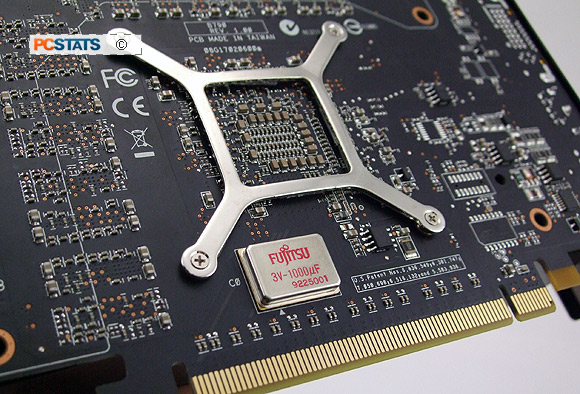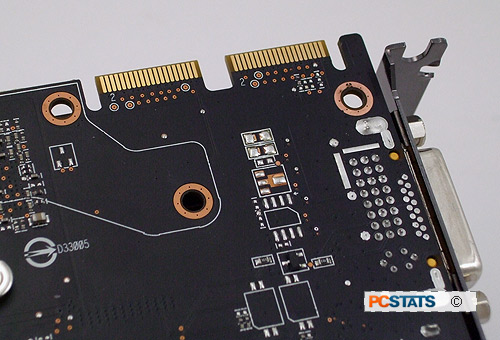The Asus EAH4890 TOP videocard uses the PCI Express x16
2.0 bus interface and features a single Radeon HD 4890 GPU, code named 'RV790.'
The RV790 graphics chip is built on a 55nm process and packs roughly 956 million
transistors into a 282mm square GPU die. The shift in architecture from the R600
series of GPUs means that RV790 runs cooler and consumes generally less power,
which in turn lets AMD's engineers turn up the overall performance. It also
means that there are now 800 stream processors on board (up from 320 in the Radeon HD 3870), and
40 texture units (up from 16). DirectX 10.1, Shader Model 4.1, OpenGL 3.0 support
is standard.
The default clock speeds for the ATI RV790 are 850MHz GPU, 975MHz
memory quad-pumped.

When calculating the speed of the Radeon HD 4890's
memory it's important to remember the actual effective speed is 3.9GHz because it is using GDDR5
memory. The AMD Radeon 48xx series are the only videocards to take advantage of
GDDR5, a memory standard that allows for quad-pumping. This means the the base
975MHz clock of the memory is actually signalling four times per clock cycle,
for an effective speed of 3900MHz (975 x 4). By comparison even the latest GT200
GPU NVIDIA cards are still using older GDDR3 memory, which can only be
dual-pumped. NVIDIA compensates for this by using wider 448 or 512 bit memory
interfaces.
The Radeon HD 4890 supports audio through a DVI-to-HDMI
adapter, along with H.264, MPEG-2 and VC-1 hardware decoding, as well as HDCP
compliance. The HDMI output carries 7.1 channel audio, making it a great
alternative if you're gaming on an HDTV or simply want to output movies from a
Blu-ray DVD drive to your big screen. These technologies are collectively
wrapped up in ATI's Avivo HD video and display platform which makes use of the
aforementioned Unified Video Decoder 2.
ATI CrossfireX
Multi-Videocard Teaming
While we didn't get a chance to test this ASUS EAH 4890
TOP HTDI/1GD5/A in Crossfire, AMD's multi-GPU technology does deserve attention.
AMD Crossfire has steadily improved in performance and
compatibility since it was first introduced with the Radeon x850 GPU. While
older Crossfire versions required a tricky master-slave card scheme in order to
function properly, the current version of Crossfire X is much more user
friendly, and supported on most of Intel and AMD motherboard chipsets.
CrossfireX can be scaled across as many four GPUs, although quad-Crossfire
adopters might want to be warned this rarely if ever gives linear performance
scaling, as we've demonstrated in previous reviews.
Heat and Noise
Observations
AMD lists the maximum board power draw for the ATI RV790
based videocard at 190W. Asus has radically re-designed the cooler for the
EAH4890 TOP, and under testing PCSTATS has found that it's improved significantly
from the stock cooler. Overall temperatures were lower under heavy load,
remaining cool to the touch at moderate fan speeds. The fans themselves
were also noticeably quieter, although at full speeds they can be still heard
while inside a system chassis.
|

The Asus EAH4890 TOP can be connected to additional Radeon
48XX videocards using the on-board Crossfire
connectors
|
Let's see if Asus new electrical system has changed the
EAH 4890 TOP's power performance...
